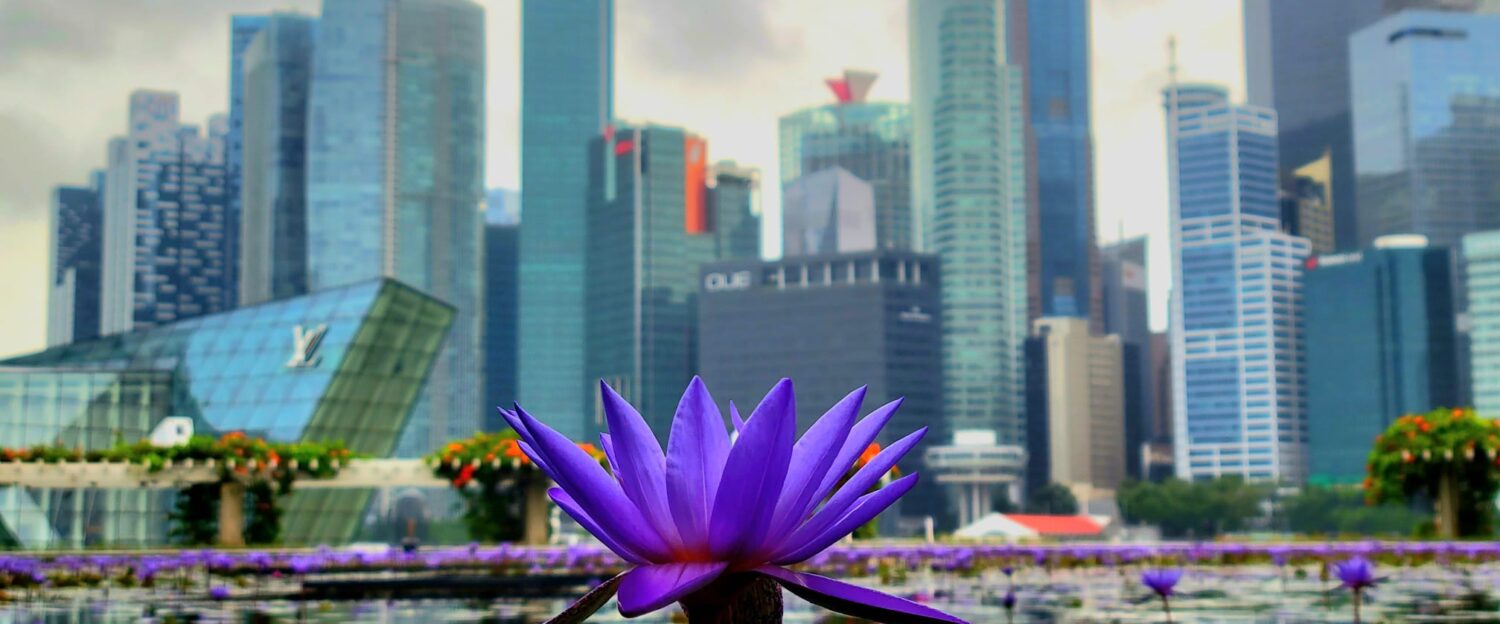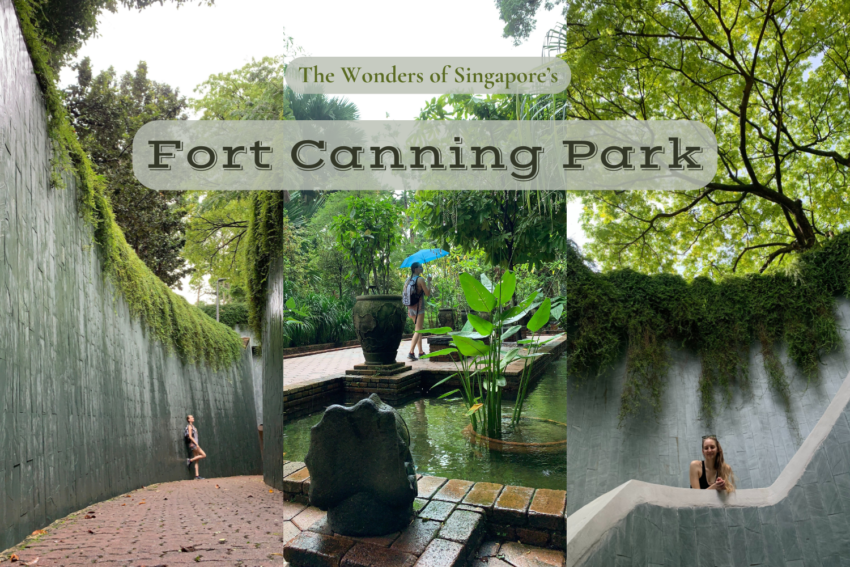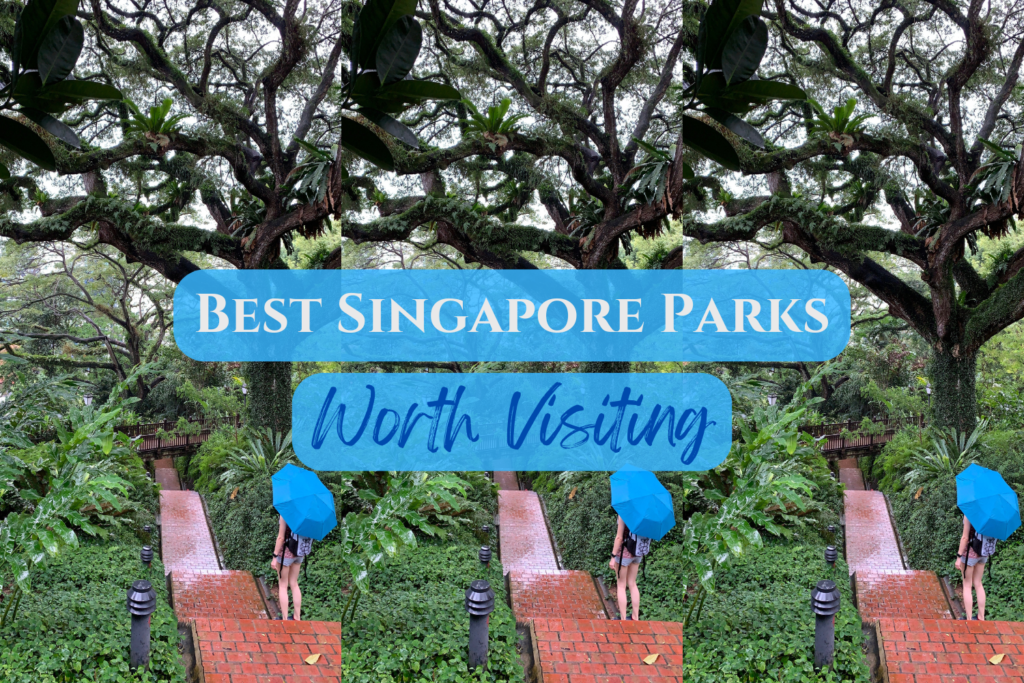Fort Canning Park is a free Singapore attraction that features an array of smaller gardens, green spaces, look out points, and playgrounds. Fort Canning Park is great for nature lovers, families, cafe goers, Instagram girls, exercise, sightseers, history buffs, and even hikers. It is located on a hill so believe me, you will get your steps in.
Situated in the heart of the city centre, this park is hard to miss; located beside Clarke Quay and the iconic Old Hill Street Police Station, Fort Canning Park is reachable by foot from Merlion Park, Plaza Singapura, CHIJMES, the National Museum of Singapore, and the Peranakan Museum/Armenian Street. Plus there are many ways to enter this park that is open 24/7.
Duration: Probably best known by tourists for its famous Tree Tunnel and Bali-style gardens, Fort Canning is a stunning hideaway that has much more to offer. You could easily spend half a day here, a full day if you like to delve into the free museums on site. View the official park map here.
Know before you go: Be sure to wear sunscreen & bug repellent. Always be prepared for rain in Singapore! Comfy shoes, sunglasses, a hat, a tripod, and water are recommended. There are restrooms and cafes inside Fort Canning Park, as well as Hotel Fort Canning. You are never too far from other dining options and air conditioned places since the park is centrally located.
♿ Although you may get around somewhat with strollers, Fort Canning Park is on a hill and therefore features an array of steep slopes and staircases. The best way to enter the park on wheels is probably via the northwestern MRT Station (DT20). The nearby Foothills park features wide & flat sidewalks. Fear not, the Fort Canning Tree Tunnel can be accessed by using the entry point at the intersection of Canning Walk and Fort Canning Road (near Fort Canning Car Park C/Hotel Fort Canning).
Feel free to use this table of contents:
Historical Attractions
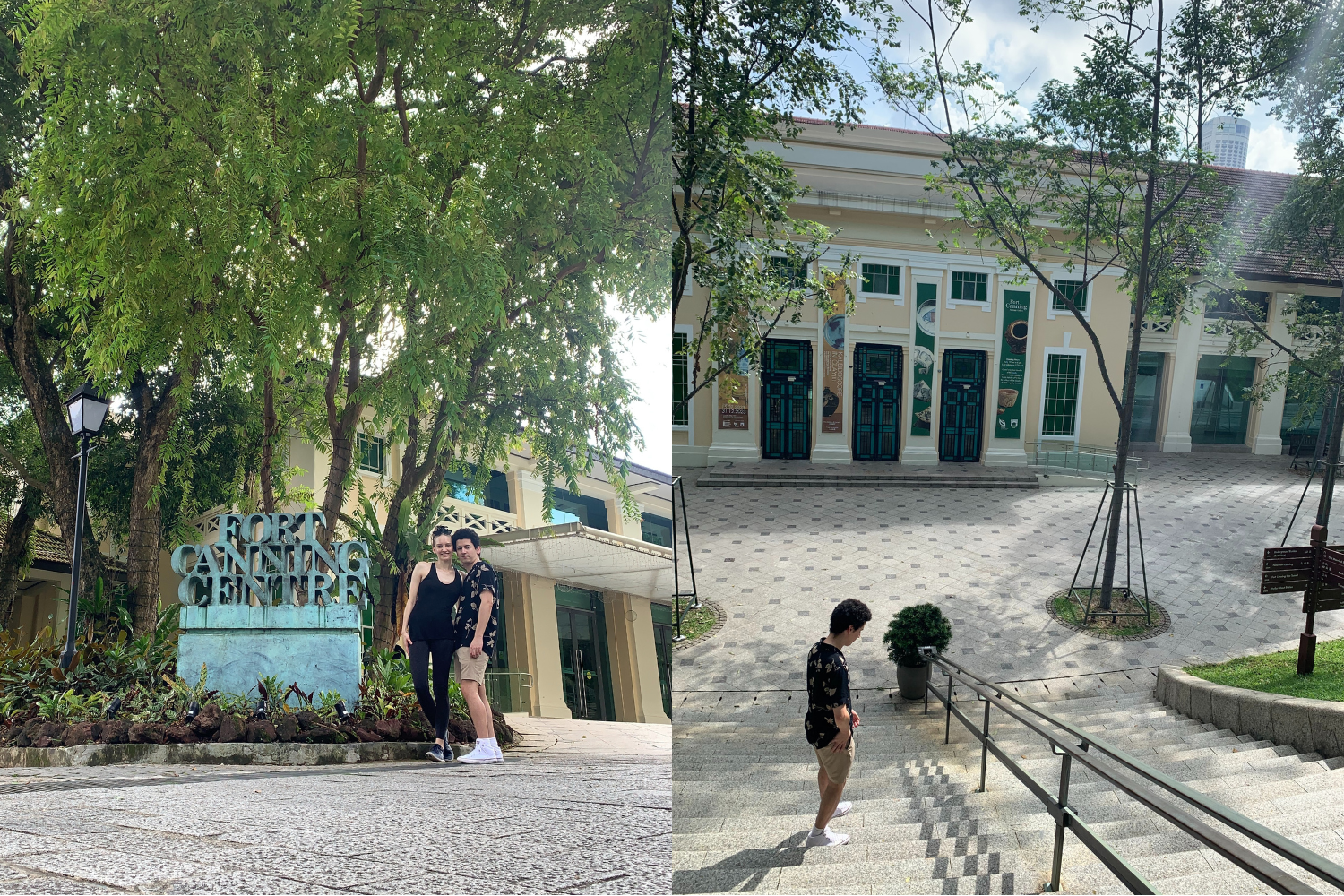
There are nine main historical attractions at Fort Canning Park, two of which are free museums!
The Fort Canning Heritage Gallery allows you to escape the heat while you learn about the mount’s historical significance from Malay kings to British rule. Only having opened since 2022, it features five distinctive zones chronicling over 700 years of history. You can also take a free guided tour and enjoy the theatre.
The Fort Canning Heritage Gallery is open daily from 10am-6pm with the exception of the last Monday of the month where it is closed. It is located inside the Fort Canning Centre along with the Fort Canning Spice Gallery. You will also find Le Jardin Cafe here.
Likewise, you’ll find the Fort Canning Spice Gallery here, highlighting Singapore as a trading hub for the spice trade; open daily 7am-7pm. This exhibit goes hand in hand with the nearby Spice Garden (read more about it below).
Go on a historical walking tour throughout Fort Canning Park; it is S$10 per person and does require a group of at least 15. To book, you must send an inquiry email to the Fort Canning Staff at least a month in advance; you can always see if you can join a preexisting booked tour! Learn more here.
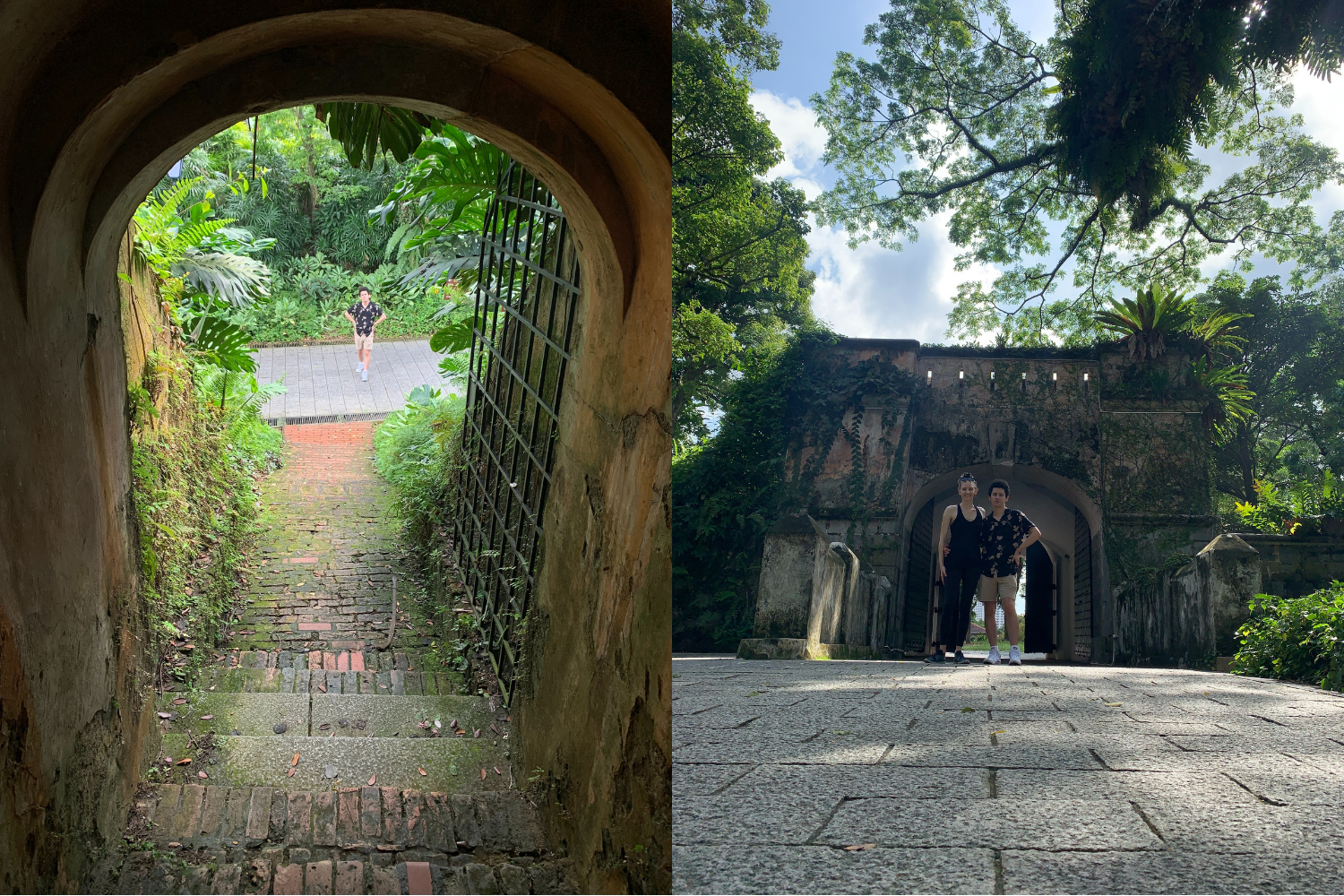
The Fort Wall is the famous arch located at the park’s hilltop, flanked by large trees and a brick walkway. This spot is beautiful for photos and nature appreciation. Beside the wall you will also find the Battle Box Escape Shaft and the Old Married Soldiers Quarters.
Once you continue toward to Fort Canning Centre and turn left, you will also encounter Sally Port, an old tunnel and stairway (as shown above), as well as the Battle Box which actually requires you to reserve your free ticket online. The Battle Box is only open Wednesdays-Sundays from 10am-5pm, with final entry at 4pm. This attraction is pretty neat as it is a series of tunnels that make up this intricate underground bunker and also offers an enhanced experience that includes two projection rooms +40-minute audio tour for S$20/pax.
Finally, on the other side of the Fort Canning Centre there are also the Cupolas. These twin cupolas are the grave site of Mr. George Dromgold Coleman, an architect and consultant to Sir Stamford Raffles. Across the field lies the Gothic Gate which was once the entrance to Singapore’s first Christian cemetery. There is also a graveyard wall and tombstones nearby.

Gardens
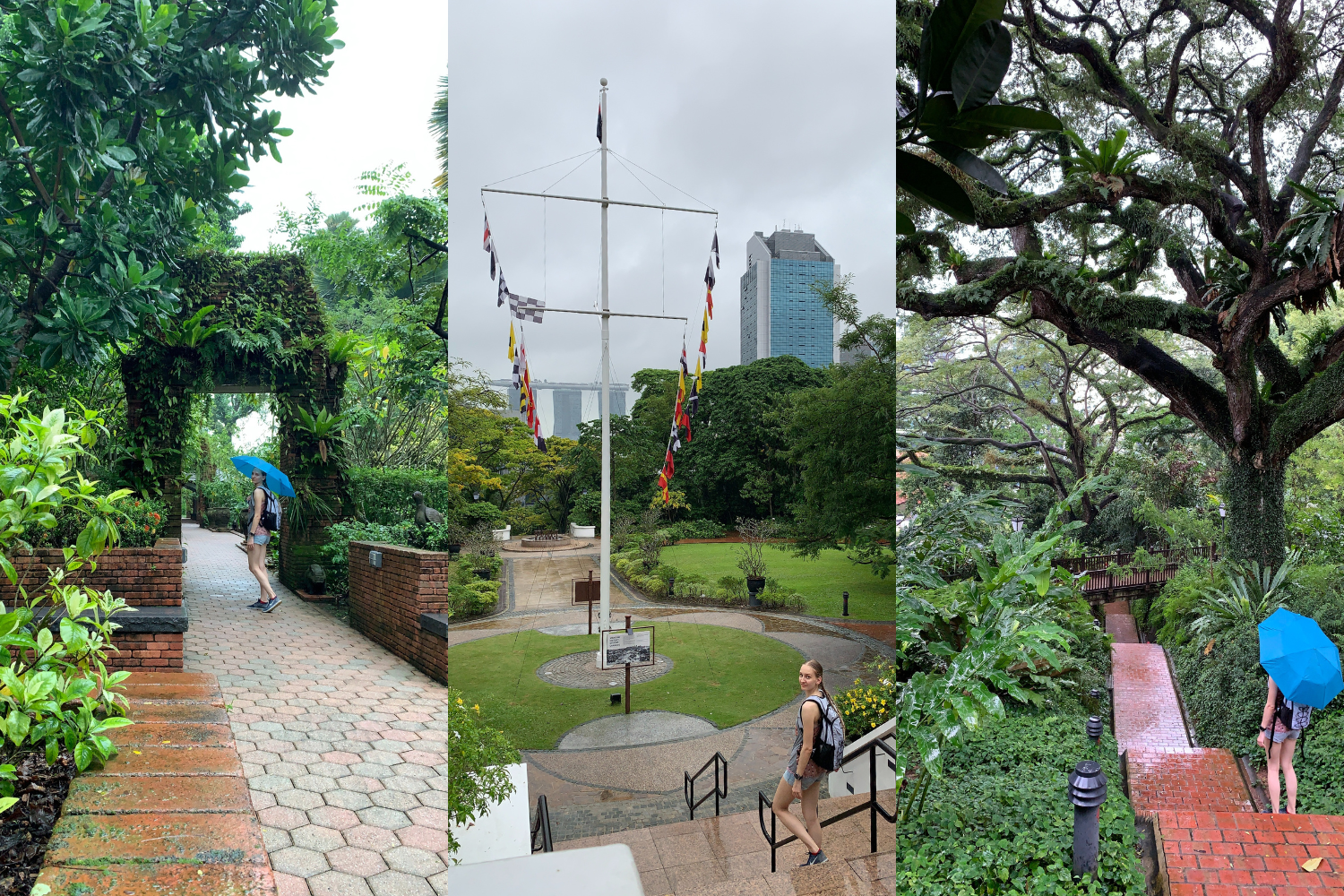
There are over eight smaller gardens that comprise Fort Canning Park. These include Puncher Larangan “The Forbidden Spring”, the Artisan’s Garden, Sang Nila Utama Garden, the ASEAN Garden, the Raffles Garden, the Farquhar Garden, the Spice Garden, and the Armenian Street Park/the First Botanic Garden. The quotations below indicate direct quotes from the Nparks website on Fort Canning Park.
The Sang Nila Utama Garden is the lush garden at Fort Canning Park, located near Raffles Garden (near the Flagstaff and Lighthouse) and has been described as the Bali within Singapore. It features a brick path and arches, small quarries of water, lush foliage, pavilions, seating, small statues, potted plants, and large tree canopies; it will make you forget you are in Singapore’s city centre.
Across Fort Canning Park and on your way up to the Fort Wall lies “The Forbidden Spring” also known as Puncher Larangan. Similar to Sang Nila Utama, this serene space was once a natural spring and bathing area that now features ponds and fountains built in the “14th century Javanese style”. It is tucked away in the lush overgrowth and easy to miss if you are not looking for it, although there is a stone sign.
The Artisan’s Garden is a pavilion that covers an old craftsmen’s workshop. This was to preserve the practice of archaeological excavation, which must have been fascinating to discover what is underneath Fort Canning Park. Here, you will be able to see displays of real artifacts and old tools.
Beside the Artisan’s Garden lies the fragrant Spice Garden. This three-zoned garden once proved to Sir Stamford Raffles that spice growing in Singapore would be successful. In fact, this garden would inspire the creation “Singapore’s first botanic garden”. This garden also features a special space for the spice of the month.
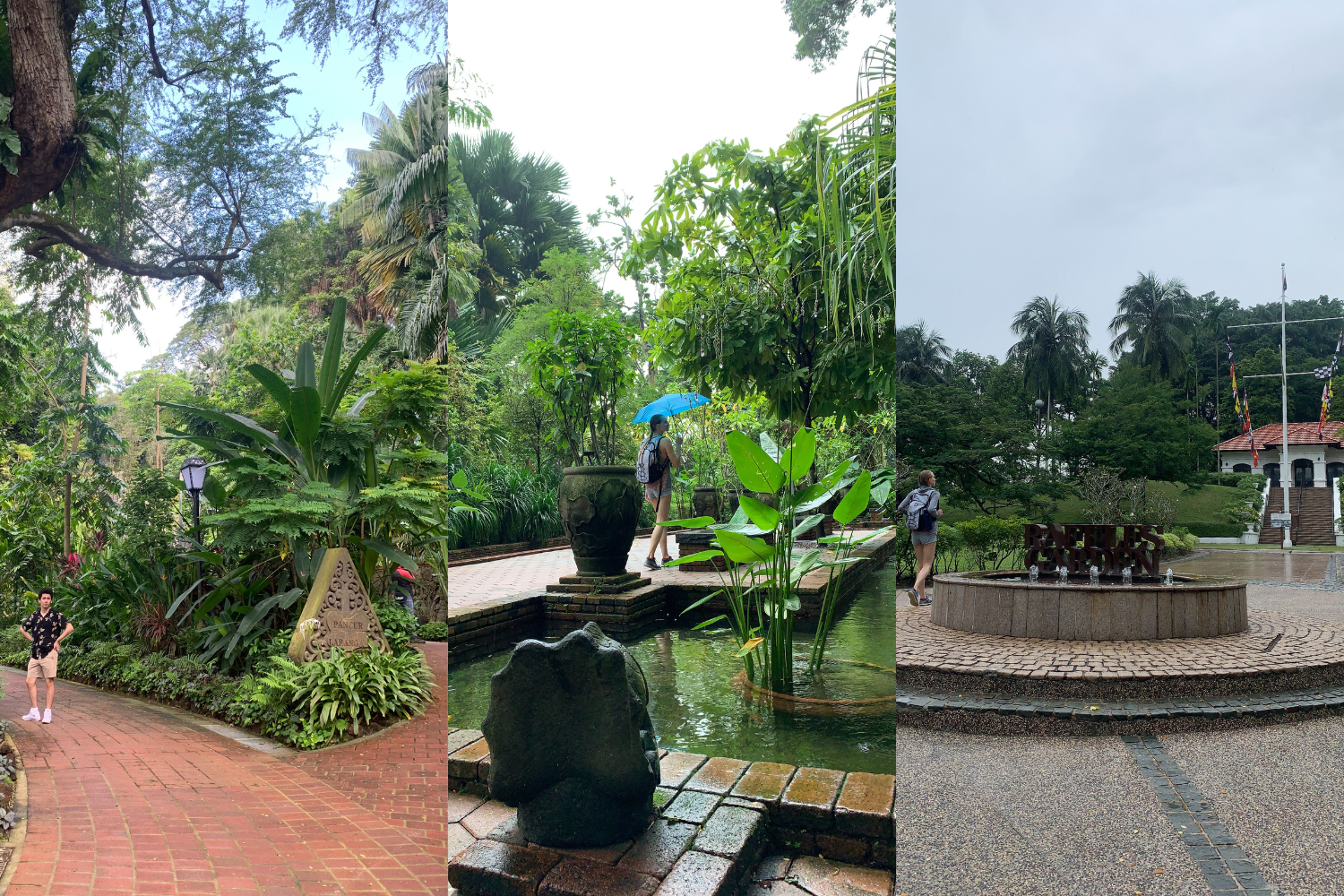
The Farquhar Garden was “named after Major-General William Farquhar” who was best known for commissioning drawings and paintings of plants and wildlife on the Malay Peninsula. This is why you will encounter picture frames all across this garden to bring forth the life within paintings.
Near the Battle Box is the ASEAN Garden, which features a variety of sculptures that were collected at a symposium in the 1980s to represent unity. Many of the sculptures originate from various Southeast Asian countries. Click here to view a breakdown and a brief history behind each statue as well as a mapped out trail for all you sculpture lovers!
Raffles Garden has some of the most iconic views of the Marina Bay Sands from the Fort Canning hilltop! Named after the founder of modern Singapore, this garden was dedicated to Sir Stamford Raffles due to his passion for “botany and wildlife”. Up here you will find the iconic water fountain with the garden’s name atop as well as the brick terrace, a lighthouse, a flagstaff, Raffles House, a time ball, and the maritime corner.
I bet you had no idea that the pedestrian area of Armenian Street is an extension to Fort Canning Park. This is because it was the site of Singapore’s First Botanic Garden dating back to 1822. This foothills region once grew loads of clove and nutmeg along with pepper, sugar, coffee, tea, and more.
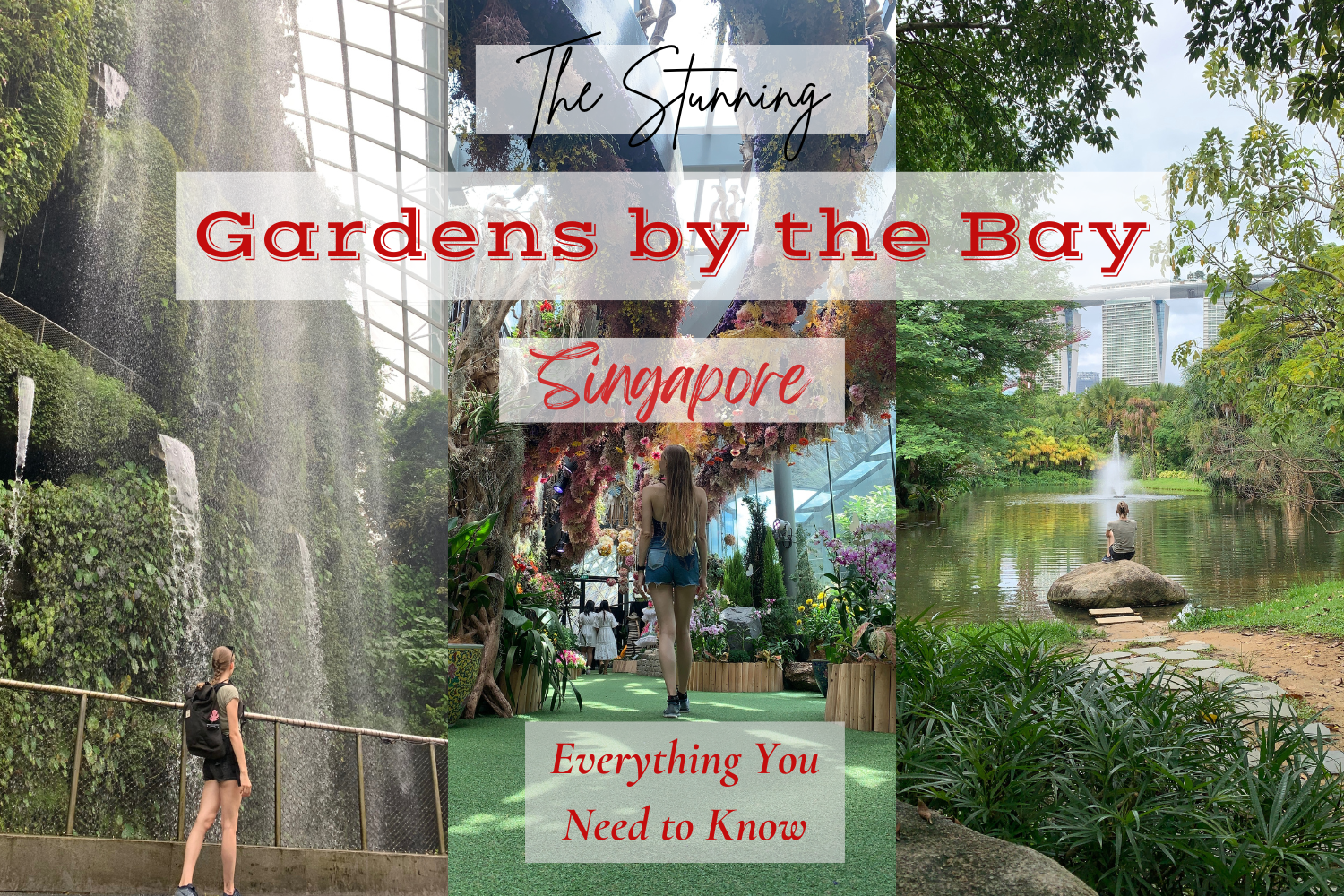
Lookout Points & Landmarks
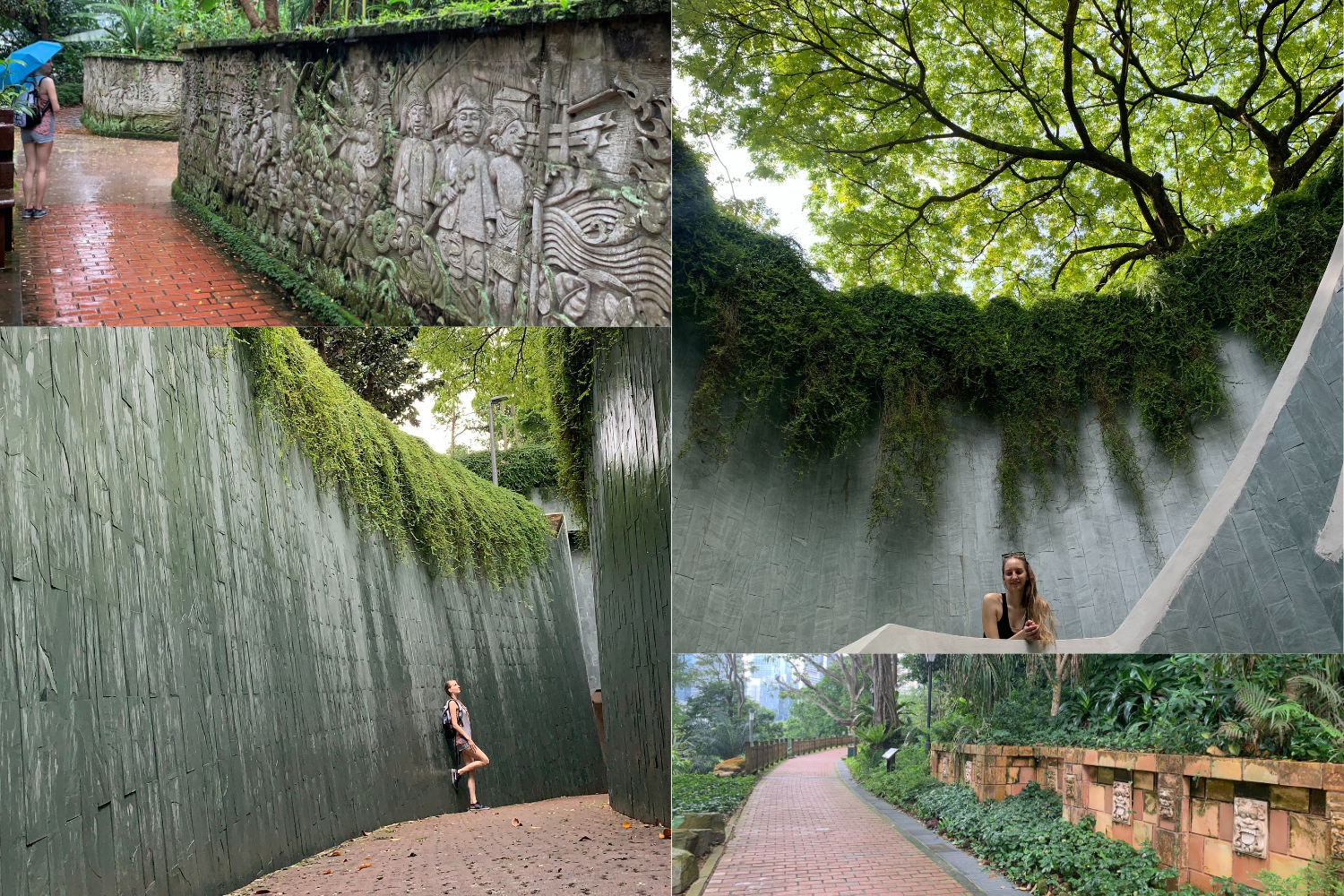
The Fort Canning Tree Tunnel is probably its trademark site for visitors to see and take iconic pictures by the winding stairway that is overtaken by a beautiful tree canopy. The tunnel itself is also a popular spot to take artsy pictures for your social media feed. You will see signs for this attraction all around the park, but is located at the north end along Fort Canning Road and Canning Rise, parallel to the Percival Steps. If you only want to check off this highlight, then getting of at the Dhoby Ghaut MRT stop (CC1/NE6/NS24) will get you there; taking a bus to Dhoby Ghaut Station Exit B is another option.
Raffle’s Garden is more or less the de facto main entrance of this top Singapore attraction. I had to mention it again since it is more than just a garden. Accessible via Hill Street (beside the iconic and colorful Old Police Station), the long series of very steep stairways is adorned by stone engravings that will lead you to Raffles Terrace, where you will also find the Raffles House, the Fort Canning Flagstaff, the Maritime Corner and Lighthouse, and of course, the breathtaking view of the Marina Bay Sands.
The River Valley Road Pedestrian Overpass has some of the coolest views from Fort Canning Park. From this overpass, you can get a great picture of the Marina Bay Sands with the Hill Street Police Station in the foreground. This overpass is located on the southwestern edge of the park. You will see a snipit of it in the next photo collage.
The Five Kings Walk and Badang Terrace are a series of trails alongside the slope of the hill. It is never a dull view from here and if you do walk into the more lush parts of the park, you will find decorative walls and stone engravings on your journey.
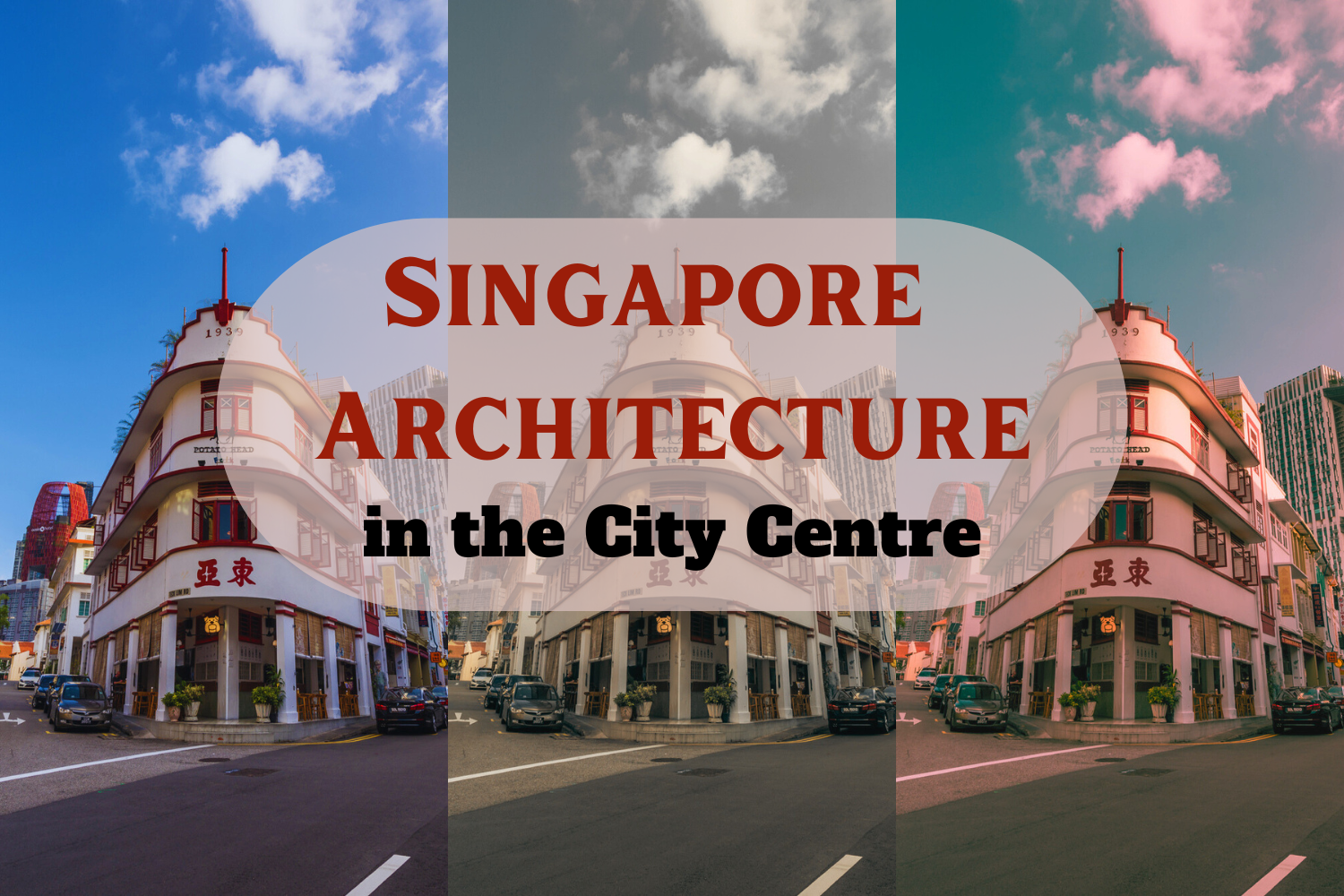
Playgrounds
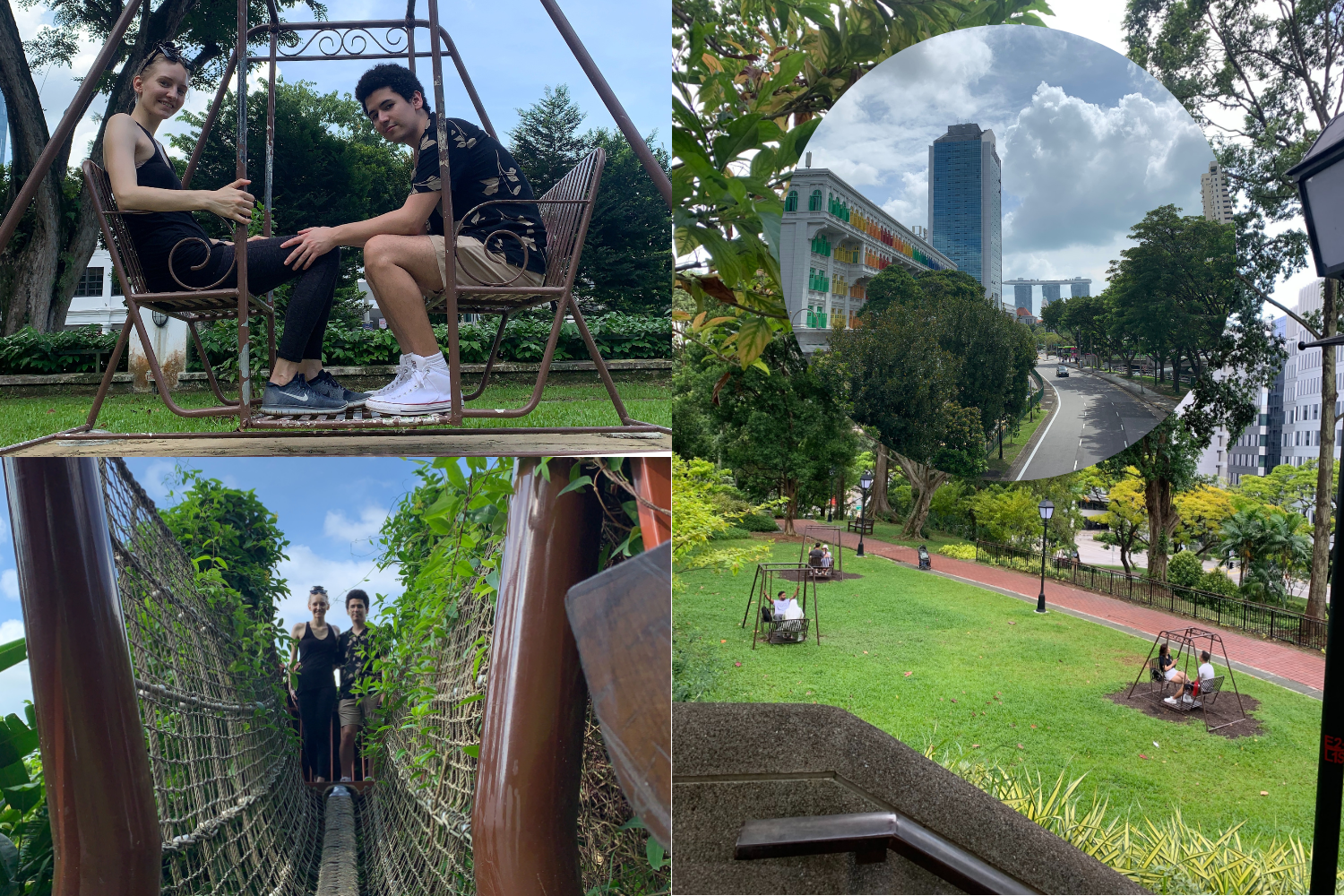
Dragon Warrior Course and Jubilee Children’s Playground are two colocated play spaces at Fort Canning Park. It features climbing nets, lookout points, and slides. The nearby Foothills feature a flat meadow for picnics and couples’ swing sets.

Hotel Fort Canning
View this post on Instagram
The gorgeous Fort Canning Park is also home to Hotel Fort Canning located on 11 Canning Walk on the northern end of the park. Hotel Fort Canning boasts a beautiful pond-side entryway, a stunning mosaic pool, and artifacts that have display cases built into the lobby floor! It also makes it perfect for capturing your instagrammable shots early (first thing in the morning before the crowds) at the Fort Canning Tree Tunnel and Sang Nila Utama Gardens. Rooms start at S$305; the terrace pool is just breathtaking.
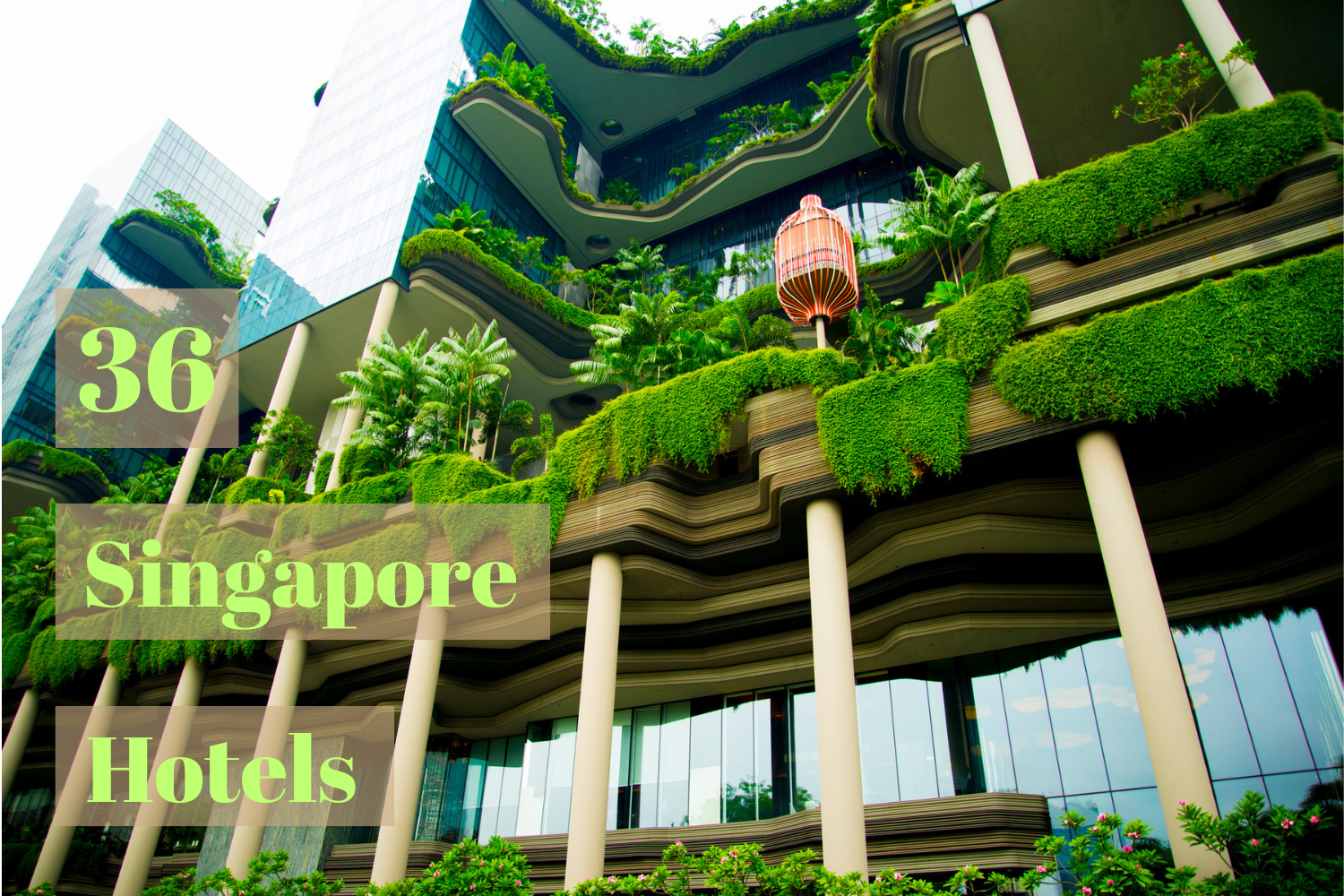
Dining at Fort Canning Park
View this post on Instagram
View this post on Instagram
There are two dining options at Fort Canning Park; Le Jardin Cafe at the Heritage Gallery and the Tiong Bahru Bakery near the playgrounds/DT20 MRT Station.
Otherwise, there are a plethora of options at the Clarke Quay Mall across the river, as well as at Dhoby Ghaut MRT Station, Plaza Singapura, Funan Mall, as well as at the National Museum of Singapore. If you are at the park in the evening, there will be more options along the Clarke Quay water promenade.

Getting to Fort Canning Park
View this post on Instagram
Getting to Fort Canning Park with public transportation:
- Take the MRT to either Dhoby Ghaut (CC1/NE6/NS24) or to the Fort Canning Stop (DT20). The Clarke Quay stop (NE5) and City Hall stops (EW13/NS25) are also within walking distance.
- Bus Lines that run along the park include lines 32, 54, 64, 123, 139, 143, 145, 147, 166, 174, 190, 195, 851. The following lines stop at nearby Dhoby Ghaut Station: 7, 14, 16, 36, 65, 77, 106, 111, 124, 167, 174, 175, 190, 652, 656, 660, 663, 665, 850E, 951E, and the 972.
- Take a taxi or a Grab to your desired entry point.
- Take a boat taxi to Clarke Quay and walk over to Fort Canning Park. You are able to take a boat taxi from Merlion Park, the Asian Civilization Museum or anywhere along the Singapore River (Shoppes at the Marina Bay Sands/ArtScience Museum). Learn more here.
- Brief walk from the Merlion, Clarke Quay, and even Orchard Central, Plaza Singapura, and Somerset malls.
🌳 If you only want to visit the Fort Canning Park Tree Tunnel, then getting of at the Dhoby Ghaut MRT Station (CC1/NE6/NS24) will get you there; taking a bus to Dhoby Ghaut Station Exit B is another option. There are many signs for the tunnel, but look for Canning Walk to access both entry points. Fort Canning Park is amazing and worth spending a few hours at!

Conclusion & Final Thoughts

Thank you for taking the time to read my blog and considering Fort Canning Park as a Singapore attraction on your next trip! I hope my pictures made you fall in love for this stunning nature space in the bustling city.
